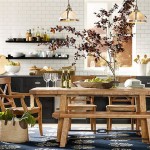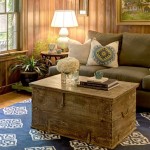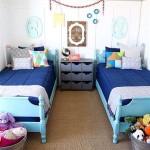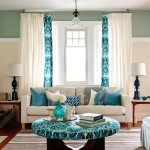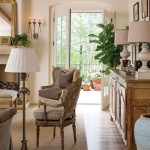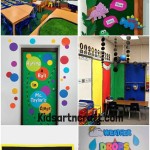Articles must have at least 1 image
How To Decorate A Large Yard
Decorating a large yard presents a unique set of opportunities and challenges. The sheer scale of the space allows for diverse design elements and functionalities, but it also requires careful planning to avoid a disjointed or overwhelming aesthetic. A successful large yard design involves thoughtful consideration of landscape architecture principles, plant selection, hardscaping features, and overall functionality.
The process begins with a thorough assessment of the existing yard. This includes understanding the topography, soil conditions, drainage patterns, sunlight exposure, and prevailing wind directions. Identifying existing features such as mature trees, rock outcroppings, or water sources can also inform the design process. All of these factors contribute to the overall viability and sustainability of any proposed landscaping project.
A key element in planning a large yard is to break the space down into zones. Creating distinct areas for different purposes, such as a garden, a patio, a play area, or a naturalistic landscape, helps to organize the space and prevent it from feeling unstructured. Each zone should have a clear purpose and be designed to meet the specific needs of its intended use.
Careful consideration should be given to the transition between these zones. Seamless transitions are essential for creating a cohesive design. This can be achieved through the use of pathways, changes in elevation, or carefully selected plant groupings that bridge the gap between different areas. Avoid abrupt changes that disrupt the flow of the landscape.
Once the overall layout is established, the specific design elements can be chosen. This includes selecting plants, hardscaping materials, and decorative features that complement the overall design aesthetic. The goal is to create a landscape that is visually appealing, functional, and sustainable.

Planning and Zoning: Defining the Scope of the Project
Effective planning is paramount when decorating a large yard. This involves not only considering the aesthetic aspects but also the practical considerations of maintenance, budget, and long-term sustainability. A well-planned design will minimize future maintenance requirements and maximize the enjoyment of the space.
Zoning is a fundamental concept in large yard design. Dividing the yard into distinct zones, each with a specific purpose, is a crucial step in creating a functional and visually appealing landscape. Common zones include:
- Entertainment Zone: This area might include a patio, deck, outdoor kitchen, or fire pit. It should be designed for social gatherings and relaxation.
- Garden Zone: This area is dedicated to growing plants, whether it's vegetables, flowers, or a combination of both. It should be located in an area with sufficient sunlight and access to water.
- Recreational Zone: This area might include a lawn for playing games, a swimming pool, or a children's play area. It should be designed for active recreation.
- Natural Zone: This area is designed to mimic a natural ecosystem. It might include a wooded area, a meadow, or a pond. It should be designed to attract wildlife and provide a sense of tranquility.
The size and layout of each zone will depend on the specific needs and preferences of the user. However, it's important to maintain a balance between the different zones and to ensure that they complement each other. Consider the scale of each element relative to the overall size of the yard.
Pathways are essential for connecting the different zones and creating a cohesive design. Pathways should be wide enough to accommodate foot traffic and should be made of durable materials that blend in with the surrounding landscape. Consider using natural materials such as gravel, stone, or wood chips.
Elevation changes can also be used to define different zones and create visual interest. A raised patio or a sunken garden can add depth and dimension to the landscape. However, it's important to ensure that any elevation changes are safe and accessible.
Plant Selection and Placement: Creating Visual Harmony
Plant selection is a critical aspect of large yard decoration. The right plants can add color, texture, and visual interest to the landscape, while also providing shade, privacy, and habitat for wildlife. Careful consideration should be given to the specific growing conditions in each zone, as well as the overall design aesthetic.
When selecting plants for a large yard, it's important to consider the following factors:
- Climate: Choose plants that are well-suited to the local climate, including temperature, rainfall, and humidity.
- Soil Conditions: Choose plants that are adapted to the local soil conditions, including pH, drainage, and nutrient content.
- Sunlight Exposure: Choose plants that are appropriate for the amount of sunlight that each zone receives.
- Mature Size: Choose plants that will not outgrow the available space. Consider both the height and width of the mature plant.
- Maintenance Requirements: Choose plants that are relatively low-maintenance and do not require excessive watering, pruning, or fertilization.
Plant placement is just as important as plant selection. Plants should be arranged in a way that creates visual harmony and balance. Consider the following principles of landscape design:
- Unity: Create a sense of unity by repeating certain elements, such as colors, textures, or plant species, throughout the landscape.
- Balance: Create a sense of balance by distributing plants symmetrically or asymmetrically.
- Proportion: Ensure that the size and scale of plants are in proportion to the overall size of the landscape.
- Rhythm: Create a sense of rhythm by repeating patterns or sequences of plants.
- Emphasis: Create a focal point by using a bold or unusual plant.
Consider using different plant heights and textures to create visual interest. Layer plants in front of each other to create depth and dimension. Use groundcovers to fill in gaps and prevent weed growth. Choose plants with different bloom times to ensure that there is always something in bloom throughout the growing season.
Large trees can provide shade and create a sense of enclosure. Shrubs can be used to define boundaries and create privacy. Perennials can add color and texture to the landscape. Annuals can provide a burst of color throughout the growing season. Ornamental grasses can add movement and texture to the landscape.
Hardscaping Elements: Adding Structure and Functionality
Hardscaping elements are the non-living components of the landscape, such as patios, decks, walkways, walls, and fences. These elements provide structure, functionality, and visual interest to the yard. Careful consideration should be given to the selection and placement of hardscaping elements to ensure that they complement the overall design aesthetic.
Patios and decks provide a space for outdoor living and entertaining. They should be located in an area that is convenient to the house and offers sufficient shade. The size and shape of the patio or deck will depend on the intended use. Consider using durable materials such as concrete, stone, or wood.
Walkways provide a pathway for moving through the landscape. They should be wide enough to accommodate foot traffic and should be made of durable materials that blend in with the surrounding landscape. Consider using natural materials such as gravel, stone, or wood chips.
Walls and fences can be used to define boundaries, create privacy, and provide support for climbing plants. They should be made of durable materials that complement the overall design aesthetic. Consider using natural materials such as stone, brick, or wood.
Water features, such as ponds, fountains, and waterfalls, can add a sense of tranquility and beauty to the landscape. They should be located in an area that is visible from the house and offers sufficient sunlight. Consider using natural materials such as stone and plants.
Lighting can be used to extend the enjoyment of the yard into the evening hours. Consider using different types of lighting to create different effects. Path lights can illuminate walkways and prevent tripping hazards. Spotlights can highlight architectural features or focal points. String lights can create a festive atmosphere. Consider using energy-efficient LED lights.
Incorporating rock features, such as boulders and rock gardens, can add a natural element to the landscape. These features can be particularly effective in areas with rocky soil or in naturalistic landscapes. Choose rocks that are native to the area and arrange them in a natural-looking way.
Furniture selection plays a crucial role in defining the functionality and aesthetic of outdoor living spaces within the yard. Choose furniture that is durable, weather-resistant, and comfortable. Consider the style of the furniture and how it complements the overall design of the yard. Arrange furniture in groupings to create inviting spaces for conversation and relaxation.
By carefully considering these hardscaping elements, it is possible to create a large yard that is both functional and visually appealing. The key is to choose elements that complement the overall design aesthetic and that meet the specific needs of the user.

21 Design Ideas For Landscaping A Large Yard Grace In My Space

Backyard Landscaping Ideas Very Large 10 000 Sq Ft Half Acre Pi Yard Acreage

Tour A Beautiful Victorian Home Decorated For Decorations Diy Outdoor Yard

Large Backyard Design Ideas Maison De Pax

Create A Backyard Paradise With These 32 Ideas Extra Space Storage

60 Creative And Easy Garden Decorating Ideas That Will Drive You Crazy My Desired Home Projects Planning
How To Make Large Outdoor Ornaments For Your Lawn

Delight Your Guests Or Surprise A Friend Neighbor When You Decora Yard Decorations Diy Outdoor

How To Decorate With Large Outdoor Planters This Girl S Life Blog

Front Home Landscaping Decor In 2025 Large Yard Rock Garden

